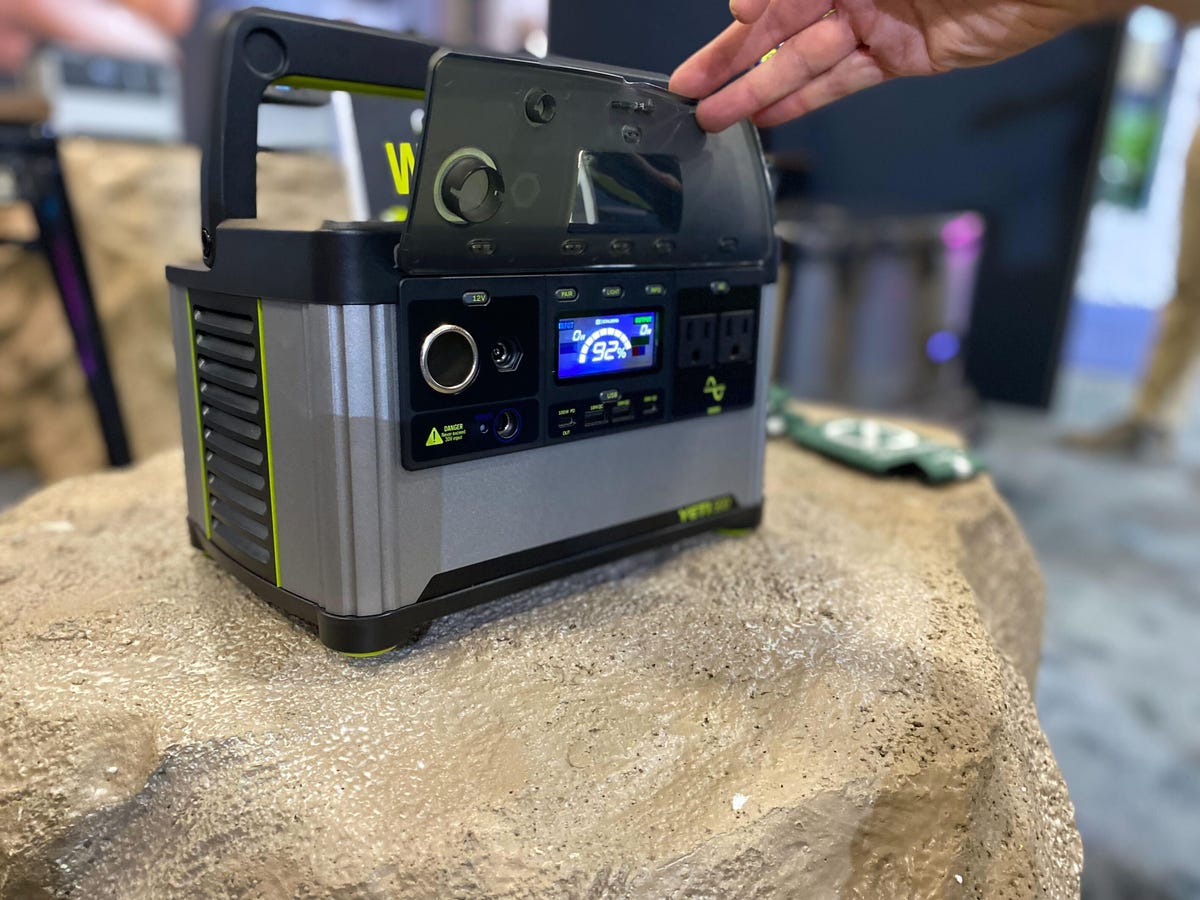Home battery backup systems can be a huge help when the power goes out. But they’re expensive. Like $10,000 or more. I checked out a system at CES 2024 that, if not quite cheap, is at least a little more reasonably priced.
It’s from Goal Zero, which has been making portable power stations for a long time. The setup, called the Haven home battery system, pairs the company’s Yeti Pro 4-kilowatt-hour power station with a transfer switch that allows it to back up as many as 10 circuits in your home.
Goal Zero had a few circuits set up in its booth, and General Manager Bill Harmon simulated a power outage for me. When he threw the lever to cut the battery off from grid power, the only thing that went out was a light — which had been turned off at the transfer switch. The battery system itself changed only slightly: The display that showed its input power dropped to zero and a countdown timer popped up saying “empty in 44 hours.” (Don’t expect it to run your whole house for 44 hours — it was only drawing 232 watts, which isn’t much.)
Interested in solar batteries?
Enter some basic information below to learn more about solar batteries and receive a free online estimate of your energy savings from going solar.
Maybe the most compelling aspect of the Haven system is its price tag. The smallest possible iteration, with 4 kWh of capacity, is $4,550 from Goal Zero’s website.
That’s a small capacity for a home backup, but it’s something. A Tesla Powerwall has more than three times the capacity — but it’s at least twice the price before installation. And you may not need that much time. The typical US power outage in 2021 was about two hours.
If you want more capacity from your Haven home battery, you can add more battery units and install them yourself.
In fact, the only thing you need to have an installer or electrician come out to do is the transfer switch. That’s the device that connects the battery to your home’s electrical system. An electrician can do that installation, which might cost a few hundred dollars. The transfer switch allows you to connect up to 10 circuits to the backup battery.




